Materials Science and Engineering
Spring: Dec 1 (domestic only), Oct 15 (international)
Summer: n/a
Chemical and Biological Engineering
Civil and Environmental Engineering
Mechanical Engineering
Electrical and Computer Engineering
Part-time (Daytime)
Overview
From drug delivery, to semiconductors, to nano-enabled membranes for water treatment, the materials science and engineering program offers graduate students a wide array of opportunities to study and develop materials that will change the world.
Program Highlights
The materials science and engineering program puts students at the forefront of many new technological developments. This program builds on a university-wide history of excellence in the field by studying the materials of our present technology base and developing the materials of the future.
The Tufts Interdisciplinary Advanced Materials Center (TIAMAT) brings it all together with more than forty Tufts faculty members coming from eight different departments—and our program prepares students for success in industry and academia alike.
Work closely with faculty every step of the way. Graduate students collaborate with and learn from some of the most renowned experts in the country, all while seamlessly transitioning from graduate studies to a full-time career.
Graduate Cooperative Education (Co-Op) Program
The School of Engineering's Graduate Cooperative Education (Co-Op) Program provides students with the opportunity to apply the theoretical principles they have learned in their coursework to real-world engineering projects. Gain up to six months of full-time work experience, build your resume, and develop a competitive advantage for post-graduation employment. Learn more about the Co-Op Program.
Program Outcomes
Though it’s a relatively new and broad field, materials science and engineering involves applications from a variety of scientific disciplines—all of which contribute to the creation of new materials. As a materials scientist or engineer, you’ll seek to understand the microstructure of a material so you can then tailor the properties to create custom (or even brand new) materials for a specific use.
Some materials scientists and engineers make specific products, while others specialize in understanding different types of materials.
Careers for graduates include:
- Ceramic engineer: develop ceramic materials and the processes for making them into products from high-temperature rocket nozzles to glass for LCD flat-panel displays.
- Composites engineer: develop materials with special engineered properties for applications in aircraft, automobiles, and related products.
- Metallurgical engineer: specialize in metals, such as steel and aluminum, usually in alloyed form with additions of other elements to provide specific properties.
- Plastics engineer: develop and test novel plastics and polymers for new applications.
- Semiconductor processing engineer: apply materials science and engineering principles to develop new microelectronic materials for computing, sensing, and related applications.
Application Requirements
Applicants to the graduate program are expected to have a degree at the level of bachelor's in engineering or basic/applied/health sciences. Students who do not meet all requirements may be admitted into the program pending the successful completion of courses aimed at the fulfillment of the requirements.
- Application Fee
- Resume/CV
- Personal Statement
- Transcripts
- Three letters of Recommendation
- Official GRE scores (if applicable)
- GRE General Test scores not required for applicants who will have received a degree from a U.S. institution by time of enrollment. GRE scores required for all other applicants.
- Official TOEFL, IELTS, or Duolingo test scores (if applicable)
- Portfolio (optional)
Tuition and Financial Aid
We recognize that attending graduate school involves a significant financial investment. Our team is here to answer your questions about tuition rates and scholarship opportunities.
Please contact us at gradadmissions@tufts.edu.
Career Outcomes

Average Salary: $104K+
Projected Job Growth (2022-2032): 5%
*Sources: Average salary and projected job growth statistics are from the U.S. Bureau of Labor Statistics Occupational Outlook Handbook.
Faculty
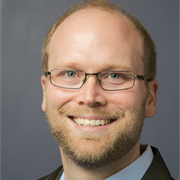
Thomas Vandervelde

Thomas Vandervelde
Research/Areas of Interest: Interaction of light with matter, physics of nanostructures and interfaces, metamaterials, material science, plasmonics, and surfactants, semiconductor photonics and electronics, epitaxial crystal growth, materials and devices for energy and infrared applications.

James Adler

James Adler
Research/Areas of Interest: Scientific computing and numerical analysis: Efficient computational methods for complex fluids, plasma physics, electromagnetism and other physical applications.

Ayse Asatekin

Ayse Asatekin
Research/Areas of Interest: membranes, polymer science, material science, separations, surface chemistry

Timothy Atherton

Timothy Atherton
Research/Areas of Interest: Condensed Matter Physics, Soft materials, Colloids, Liquid Crystals, Computational Physics, Physics Education Soft matter physics is the study of matter that is all around us in everyday life: soaps, oil, foods, sand, foams, and biological matter. All of these are readily deformable at room temperature and combine properties of both fluids and solids. Despite their ubiquity, these materials are extremely complicated. Unlike simple fluids like water, they have rich internal structure; unlike crystalline solids they are typically not periodically ordered. Moreover, they exist in long-lived metastable states far from equilibrium and respond to stimuli such as applied electric and magnetic fields, temperature and pressure. My work seeks to understand how these materials respond to shape: how they self-organize on curved surfaces or in complex geometries and how this knowledge can be used both to sculpt desirable shapes at the microscopic scale and create shape changing systems like soft robots. We use high performance computing to simulate and predict these behaviors and work closely with experimentalists at Tufts and beyond.

Peggy Cebe

Peggy Cebe
Research/Areas of Interest: Condensed Matter Physics, Polymer Physics
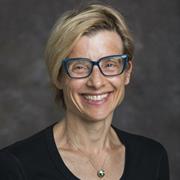
Luisa Chiesa

Luisa Chiesa
Research/Areas of Interest: sustainable energy, superconducting materials, materials science
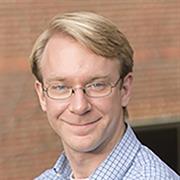
Luke Davis

Luke Davis
Research/Areas of Interest: I am interested in synthesis and characterization in inorganic and materials chemistry. I am especially interested in fundamental or applied chemistry that has important societal implications. My research laboratory has ongoing projects in several areas: Zero-emissions ironmaking. The synthesis of iron metal from iron ore contributes ca. 4% of global carbon dioxide emissions. I am interested in alternative thermochemical methods, such as the use of ammonia, for making iron from iron oxides. This project has extended to other critical metals also. Thin-film photovoltaics with earth-abundant, sulfide-based absorber layers. Thin-film photovoltaics (solar cells) provide electricity from sunlight with just a few hundred nm of light-absorbing material. We are exploring binary and ternary sulfides as top-cell materials for tandem photovoltaics. Earth-abundant molecular light absorbers and emitters. Molecular light absorbers and emitters are used in photoredox catalysis, dye-sensitized solar cells, and organic light-emitting diodes (OLEDs). We are exploring high-spin complexes of iron and manganese to prepare new molecules that absorb and emit light. I am developing new research programs in other areas: New superconducting materials. Near-room-temperature superconductors have recently been realized in compressed hydrides. I am interested in new hydride compounds that are stable at ambient pressure and might serve as ambient-pressure, ambient-temperature superconductors. Volatile molecules carrying metal-atom equivalents for superconducting wires. Cryogenic superconducting wires enable quantum bits based on Josephson junctions. We are developing new molecules and methods to deposit the electropositive metals that make up these wires from chemical vapors.

Prashant Deshlahra

Prashant Deshlahra
Research/Areas of Interest: heterogeneous catalysis, sustainable production of chemicals and fuels, DFT calculations
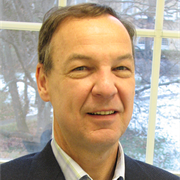
Luis Dorfmann

Luis Dorfmann
Research/Areas of Interest: Mathematical models of material behavior; Nonlinear magneto- and electromechanical interactions; Biomechanics of soft materials; Rubber elasticity and inelasticity

Nathaniel Eagan

Nathaniel Eagan
Research/Areas of Interest: Sustainability, experimental heterogeneous catalysis, clean energy, fuels and chemicals, biomass
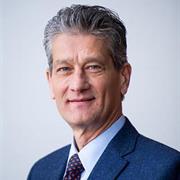
Sergio Fantini

Sergio Fantini
Research/Areas of Interest: Biomedical optics, diffuse optical imaging, functional near-infrared spectroscopy, quantitative tissue oximetry.

John Germaine

John Germaine
Research/Areas of Interest: geotechnical, laboratory testing, automation, soil behavior, physical properties, mechanical properties, material science

Marc Hodes

Marc Hodes
Research/Areas of Interest: heat transfer, apparent slip, thermal management of electronics, mass transfer in supercritical fluids and thermoelectricity, material science
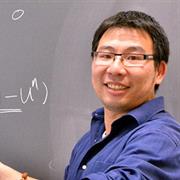
Xiaozhe Hu

Research/Areas of Interest: Scientific computing and numerical analysis; Parallel multigrid and multilevel methods for large-scale coupled systems; Efficient numerical methods for reservoir simulation, fluid-structure interaction, and other applications.

Mark Kachanov

Mark Kachanov
Research/Areas of Interest: Mechanics of materials; effective properties of heterogeneous materials; microstructure-property relationships; applications to material science
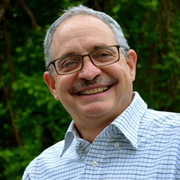
David Kaplan

David Kaplan
Research/Areas of Interest: biopolymer engineering, biomaterials, material science, tissue engineering, bioengineering, cellular agriculture
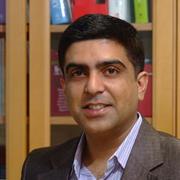
Krishna Kumar

Krishna Kumar
Research/Areas of Interest: Bioorganic Chemistry and Chemical Biology The research interests of the Kumar laboratory are centered on the (1) use of chemistry to design molecules to interrogate and illuminate fundamental mechanisms in biology, or be used as therapeutics; and (2) use of biology to "evolve" and "select" molecules that can perform chemistry in non-biological and medicinal settings. These are some questions we are trying to answer: (i) Is it possible to design and mimic natural proteins and other biological macromolecules by use of building blocks that nature does not use – and whether such constructs can be endowed with properties that are not found in biology?; (ii) How did the first enzymes arise in the imagined Darwin's pond – is there a way to recreate this scenario and in the process develop a fundamentally new method to create enzymes?; (iii) Biology uses phase separation, that is, clustering of different compounds in confined locations – a process that is key in orchestrating the daily activities of a cell – can we find methods that can predictably dictate where molecules are located in a given environment and thereby direct the phenotype that is generated?; (iv) Can we rationally design small molecules and peptides that can function against antibiotic resistant bacteria that are threatening the most basic tenet of modern medicine?

Kyongbum Lee

Kyongbum Lee
Research/Areas of Interest: metabolic engineering, tissue engineering, systems biology
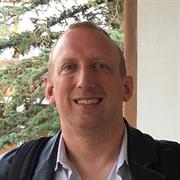
Peter Love

Peter Love
Research/Areas of Interest: Quantum Information, Quantum Simulation, Adiabatic Quantum Computation, Computational Physics Quantum information faces three basic questions. Firstly, what are quantum computers good for? Secondly, how do we build one? Thirdly, what will quantum information contribute if technological obstacles to constructing a large scale quantum computer prove insuperable? The first question is the search for problems which quantum computers can solve more easily than classical computers. The second is an investigation of which physical systems one could use to build a quantum computer. The third leads to the search for spinoffs in classical computation, and the question of where the classical/quantum boundary lies. I am interested in all three questions.

Charlie Mace

Charlie Mace
Research/Areas of Interest: Bioanalytical and Materials Chemistry. To solve outstanding problems in global health, the Mace Lab applies a multidisciplinary approach combining aspects of analytical chemistry, materials science, and engineering. The primary goal of the Mace lab is to develop low cost, patient-centric technologies that can improve access to healthcare. To achieve this, the Mace Lab designs devices that improve the self-collection of blood and enable the diagnosis of diseases in resource-limited settings, and they are exploring ways the methods that are developed in the lab can used by others. Their main techniques leverage the properties of paper and other porous materials to integrate function into simple, affordable devices. Unique to laboratories in Chemistry departments, his group specializes in handling human blood and saliva. Technologies developed in the Mace lab have made the leap to clinical sites in Africa, South America, and the US, owing to their network of clinical, academic, and industry collaborators. The Mace Lab has broad expertise in assay development and device prototyping, which they apply to evaluating the efficacy of candidate therapeutics, performing separations that lead to new measurements, and making field-deployable kits for point-of-care testing. They have additional expertise in instrument development, phase separation in systems of polymers, and microfluidics.
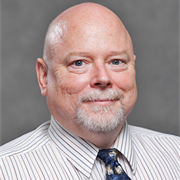
Douglas Matson

Douglas Matson
Research/Areas of Interest: solidification processes, thermal manufacturing, machine design, materials science
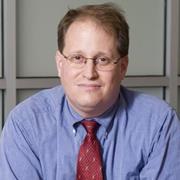
Eric Miller

Eric Miller
Research/Areas of Interest: Statistical- and physics-based signal and image modeling and processing, tomographic image formation and object characterization, and inverse problems. Applications explored include human performance assessment, materials science, airport security, medical imaging, environmental monitoring and remediation, unexploded ordnance remediation, and automatic target detection and classification.

Aseema Mohanty

Aseema Mohanty
Research/Areas of Interest: nanophotonics, optical beam shaping, neuroengineering, chip-scale imaging and microscopy, quantum information systems Research Website: https://sites.tufts.edu/amohanty/
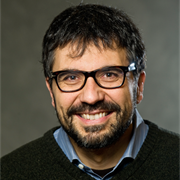
Fiorenzo Omenetto

Fiorenzo Omenetto
Research/Areas of Interest: ultrafast nonlinear optics, nanophotonics, biopolymer multifunctional materials, material science, photonic crystals, photonic crystal fibers
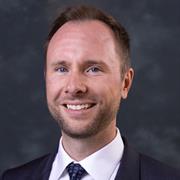
Matthew Panzer

Matthew Panzer
Research/Areas of Interest: Ionic liquids, ionogels, eutectogels, polymers, ion transport, electrochemical energy storage
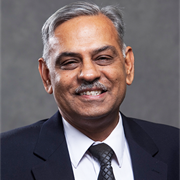
Anil Saigal

Anil Saigal
Research/Areas of Interest: materials engineering, materials science, manufacturing processes, quality control
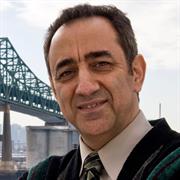
Masoud Sanayei

Masoud Sanayei
Research/Areas of Interest: Bridge structural health monitoring, building train-induced vibrations, nondestructive testing of full-scale structures, fatigue life prediction of structures with nonproportional multi-axial loading.
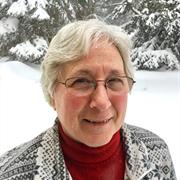
Mary Shultz

Mary Shultz
Research/Areas of Interest: Physical Chemistry and Surface Science. The Shultz group applies physics and chemistry to understand the inner workings of hydrogen bonding. Hydrogen bonding plays key roles in environmental, biological, and atmospheric chemistry. Our program has research thrusts in all three directions. We specialize both in devising environments that clearly reveal key interactions and in developing new instrumentation. The most recent focus is on icy surfaces and on clathrate formation. Probing the ice surface begins with a well-prepared single-crystal surface. We have unique capabilities for growing single-crystal ice from the melt and for and preparing any desired ice face. Our clean water efforts are aimed at developing new materials to fill the significant need for safe drinking water. According to the World Health Organization, over one billion people lack safe drinking water. Our program is based on using photo catalysts to capture readily available sunlight to turn pollutants into benign CO2 and water. We developed methods to grow ultra-nano (~2 nm) particles that have well-controlled surface structures and chemistry.
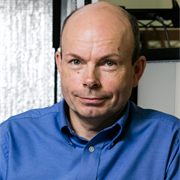
Igor Sokolov

Igor Sokolov
Research/Areas of Interest: Present: Engineering for Health -> Physics of cancer and aging -> Mechanics of biomaterials at the nanoscale, Synthesis and study of functional nanomaterials for biomedical imaging and drug delivery, Advanced imaging for medical diagnostics, Novel processes and materials for dentistry: nano-polishing and self-healing materials. Favorite experimental techniques: atomic force microscopy/scanning probe microscopy, confocal microscopy and spectroscopy, nanoindenters. Favorite theoretical methods: contact models, machine learning methods. Past: quantum field theory, theory of gravity, cosmology, Casimir effect.

Sameer Sonkusale

Sameer Sonkusale
Research/Areas of Interest: Bioelectronics, Biomedical microdevices, Wearables, Ingestibles, Biomedical circuits and systems, micro and nano fabrication, lab-on-chip microsystems, global health and precision medicine, CMOS image sensors for scientific imaging, analog to information converters, analog computing, brain inspired machine learning, active metamaterial devices, circuits, and systems, terahertz devices and circuits
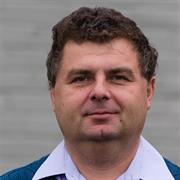
Cristian Staii

Cristian Staii
Research/Areas of Interest: Biological Physics, Condensed Matter Physics, Quantum Mechanics My research interests cover a broad array of topics in biological physics, condensed matter physics and quantum mechanics. In biological physics our group is performing both experimental and theoretical work to uncover fundamental physical principles that underlie the formation of functional neuronal networks among neurons in the brain. One of the primary challenges in science today is to figure out how as many as 100 billion neurons are produced, grow, and organize themselves into the truly wonderful information-processing machine which is the brain. We combine high-resolution imaging techniques such as atomic force, traction force and fluorescence microscopy to measure mechanical properties of neurons and to correlate these properties with internal components of the cell. Our group is also using mathematical modeling based on stochastic differential equations and the theory of dynamical systems to predict axonal growth and the formation of neuronal networks. The aim of this work is twofold. On the one hand we are using tools and concepts from experimental and theoretical physics to understand biological processes. On the other hand, active biological processes in neuronal cells exhibit a wealth of fascinating phenomena such as feedback control, pattern formation, collective behavior, and non equilibrium dynamics, and thus the insights learned from studying these biological systems broaden the intellectual range of physics. I am also interested in the foundations of quantum mechanics, particularly in decoherence phenomena and in applying the theory of stochastic processes to open quantum systems. My interests in condensed matter physics include quantum transport in nanoscale systems (carbon nanotubes, graphene, polymer composites, hybrid nanostructures), as well as scanning probe microscopy investigations of novel biomaterials.

E. Charles Sykes

E. Charles Sykes
Research/Areas of Interest: Physical Chemistry, Surface Science, and Nanoscience. The Sykes group utilizes state of the art scanning probes and surface science instrumentation to study technologically important systems. For example, scanning tunneling microscopy enables visualization of geometric and electronic properties of catalytically relevant metal alloy surfaces at the nanoscale. Using temperature programmed reaction studies of well defined model catalyst surfaces structure-property-activity relationships are drawn. Of particular interest is the addition of individual atoms of a reactive metal to a relatively inert host. In this way reactivity can be tuned, and provided the energetic landscapes are understood, novel bifunctional catalytic systems can be designed with unique properties that include low temperature activation and highly selective chemistry. Newly developed curved single crystal surface are also being used to open up previously inaccessible areas of structure sensitive surface chemistry and chiral surface geometries. In a different thrust, the group has developed various molecular motor systems that are enabling us to study many important fundamental aspects of molecular rotation and translation with unprecedented resolution.
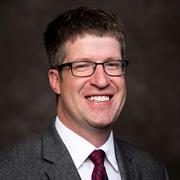
Samuel Thomas

Samuel Thomas
Research/Areas of Interest: Organic Materials Chemistry Our group applies the philosophy of physical organic chemistry to organic materials, in the forms of polymers, crystals and surfaces. Specifically, we investigate new materials that show macroscopic changes in properties upon exposure to external stimuli. Our main focus has been new materials that respond to light, which has a unique combination of characteristics: i) easy control over where light goes and when it goes there (spatiotemporal control), ii) easy control over intensity and energy, and iii) the ability to pass through many solid materials that traditional chemical reagents cannot. Our research has focused in three separate areas. 1. Photochemical control of charge. As interactions between charges dictate much of molecular behavior, controlling charge can yield control over matter. We have developed a series of materials in which light switches the charge-based interactions between polymer chains from attractive. By combining this top-down fabrication approach of with the bottom-up fabrication method of layer-by-layer assembly, we have developed thin films in which photochemical lability is confined to individual nanoscale compartments, yielding photo-delaminated free-standing films and multi-height photolithography. 2. Using functional side chains to control conjugated materials. Conjugated materials hold great promise for applications including solar cells and displays. We have focused on expanding the role of the side-chains of these materials, which occupy up to half of their mass but are typically reserved only for solubility. Early work in our group focused on integrating photolabile side chains for negative conjugated photoresists. This has evolved to using the non-covalent interactions of aromatic side-chains for controlling interactions between molecules, and therefore their material properties, including the use of mechanical force to control luminescence—mechanofluorochromism. 3. Singlet-oxygen responsive materials. Singlet oxygen (1O2) is a critical reactive oxygen species in photodynamic therapy for cancer as well as in damage to plants upon overexposure to light. Its photochemical production is also chemically amplified through a photochemical reaction, which is the lynchpin of several commercial bioanalytical technologies. Through a combination of fundamental physical organic chemistry and materials chemistry, we have luminescent conjugated polymer nanoparticles as probes for 1O2 in water that shows improved limit of detection over the commercially available luminescent probe for 1O2.
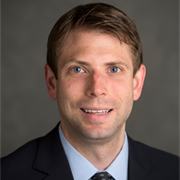
Brian Timko

Brian Timko
Research/Areas of Interest: nanoelectronics, biosensing, biomaterials, tissue engineering, drug delivery

Roger Tobin

Roger Tobin
Research/Areas of Interest: Experimental condensed matter physics; physics education For most of my career, my primary physics research area has been experimental surface science. In my lab at 574 Boston Ave., my students and I have studied what happens when foreign atoms and molecules form chemical bonds with metal surfaces. Our research has had implications for a range of potential applications including catalysis, chemical sensing, and the growth of thin films and nanoparticles on surfaces. In recent years my focus has shifted towards physics education, at both the college and, especially, at the elementary school level. Together with collaborators at a local nonprofit organization and at other universities, I have helped to develop and study curriculum materials and professional development strategies for the study of matter and energy in grades 3-5. In my own classes at Tufts, I have implemented and studied a range of instructional approaches aimed at more effective and equitable learning.

Arthur Utz

Arthur Utz
Research/Areas of Interest: Physical and Surface Chemistry. The Utz group studies how molecules react on surfaces. Reactions at the gas-surface interface are highly dynamical events. Large-scale atomic and vibrational motions transform reactants into products on sub-ps and Å scales. The experiments probe ultrafast nuclear motion and energy flow dynamics that underlie heterogeneous catalysis and chemical vapor deposition. The goal is to to better model existing processes and direct the rational design of new catalytic materials and deposition techniques. The experiments use vibrational- and rotational-state selective laser excitation of molecules in a supersonic molecular beam to provide precise control over the energetics and orientation of the gas-phase reagent as it approaches the surface. Reaction probability and product identity is then quantified as a function of the reagent's energetic configuration. These experiments have shown that the vibrational state of the incident molecule can have a profound effect on reaction probability, and suggest that energy redisribution within the reaction complex is not complete prior to reaction and that the competing kinetics of energy redistribution and reaction might be manipulated to control the outcome of a reaction. This has been subsequently confirmed by exerting bond-elective control over a heterogeneously catalyzed reaction.
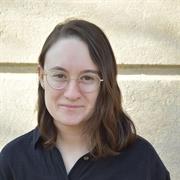
Corey White

Corey White
Research/Areas of Interest: (opto)electronics and photonics, compound semiconductors, emerging materials, epitaxial growth, hetero- and nano-structures, applications in sensing, integrated photonics, and quantum information systems
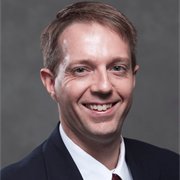
Robert White

Robert White
Research/Areas of Interest: Microelectromechanical Systems (MEMS) fabrication, modeling, and testing. Particularly acoustic MEMS (microphones, ultrasound), and aerodynamic measurement technologies (skin friction sensors, aeroacoustic sensors). High altitude atmospheric sensing and acoustics for planetary science. Acoustics, vibrations, dynamics and controls. Electromechanical systems including robotics. Finite element methods and system modeling. Electronics for measurement. Mechanical measurements.
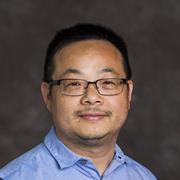
Qiaobing Xu

Qiaobing Xu
Research/Areas of Interest: biomaterials, drug delivery, micro/nanofabrication, tissue engineering

Hyunmin Yi

Hyunmin Yi
Research/Areas of Interest: nanobiofabrication, smart biopolymers, BioMEMS, material science

Michael Zimmerman

Michael Zimmerman
Research/Areas of Interest: novel polymer electrolytes for batteries, liquid crystal polymers, composite materials, materials science